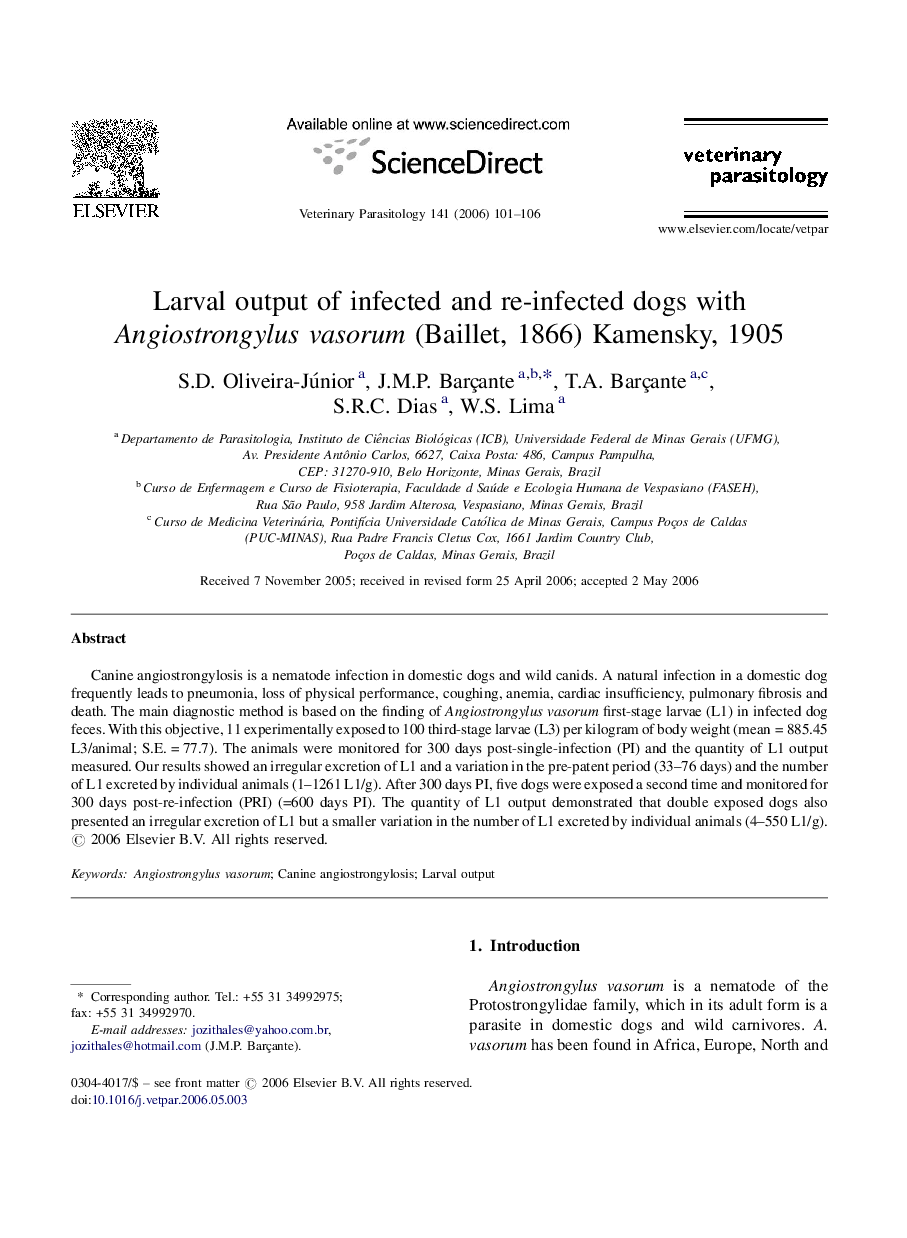| Article ID | Journal | Published Year | Pages | File Type |
|---|---|---|---|---|
| 2472378 | Veterinary Parasitology | 2006 | 6 Pages |
Canine angiostrongylosis is a nematode infection in domestic dogs and wild canids. A natural infection in a domestic dog frequently leads to pneumonia, loss of physical performance, coughing, anemia, cardiac insufficiency, pulmonary fibrosis and death. The main diagnostic method is based on the finding of Angiostrongylus vasorum first-stage larvae (L1) in infected dog feces. With this objective, 11 experimentally exposed to 100 third-stage larvae (L3) per kilogram of body weight (mean = 885.45 L3/animal; S.E. = 77.7). The animals were monitored for 300 days post-single-infection (PI) and the quantity of L1 output measured. Our results showed an irregular excretion of L1 and a variation in the pre-patent period (33–76 days) and the number of L1 excreted by individual animals (1–1261 L1/g). After 300 days PI, five dogs were exposed a second time and monitored for 300 days post-re-infection (PRI) (=600 days PI). The quantity of L1 output demonstrated that double exposed dogs also presented an irregular excretion of L1 but a smaller variation in the number of L1 excreted by individual animals (4–550 L1/g).
